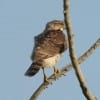
By Jim Stevenson
Our article today is from a trip to the Hawkwatch Tower last week, managed skillfully by Gulf Coast Bird Observatory. Many thanks to them for all they do for Conservation and Public Environmental Education. You should join them if you haven’t yet.
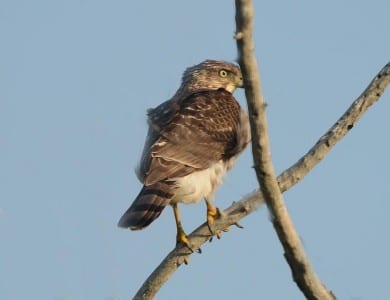
This is an immature Cooper’s Hawk, the larger of our two accipiters. Its large head, short wings and rounded tail give it away. They are very wary in rural settings like my property but tamer in cities and they’ll just about fly right past you at the Hawkwatch tower. Like so many young hawks, their kids are your basic brown with brown streaks.
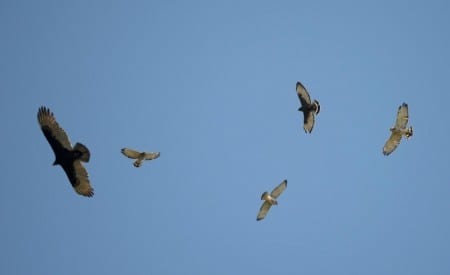
The entire reason I drove to the Hawkwatch Tower this week was to see the dark morph Broad-winged Hawk my friend David Hanson told me about. (I was also hoping he’d gimme a few photography lessons.) You can see he’s surrounded by “normal” broadies, immatures and adults. The TV is there for size comparison.
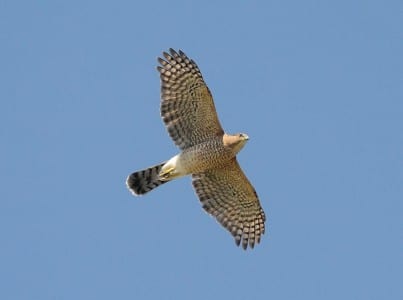
There aren’t many adult accipiters migrating this late and getting a close one was a treat. You can tell it’s an accipiter by the relatively short, rounded wings and the long tail. This is a Cooper’s Hawk, by virtue of the larger head, rounded, white-tipped tail and the wings that go straight across in the front, like a cross. 😉 Here’s an immature Cooper’s, with the same field marks, plus the regular streaking on the breast. Many young hawks are brown with streaks, as camouflage trumps pretty colors when you’re sterile, anyway! (Oh, that’ll keep the cards and letters coming!) 😉 A theme for this lesson will be the number of feather booboo’s seen on these late-migrating hawks. I was told these imperfections made them late but I suspect the opposite. I think they’ve been hunting and flying longer than September birds so they are more beat up. But I really don’t know.
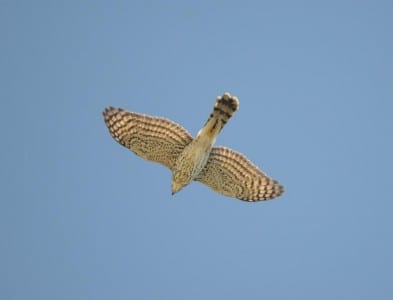
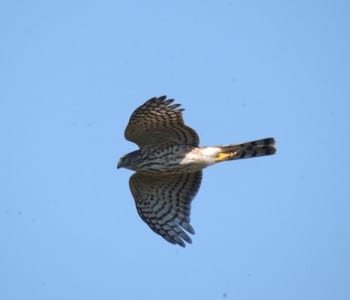
A smaller accipiter is the Sharp-shinned Hawk, more a songbird-eater. Note the small head (not gifted), badly bent wings and squared-off tail. Also, the streaking is a little bunchy and bold, not like the thin, even streaking of its larger cousin. Sharpies seem a bit more wary than coops, but I honestly don’t know.
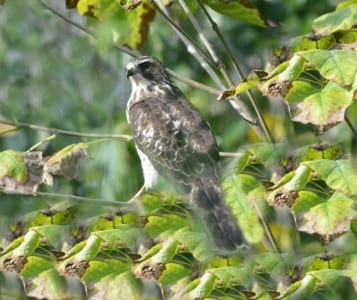
Back to buteos, this is an immature Broad-winged Hawk, again, your basic brown with streaks. (I just beamed this one down from the Enterprise, so the tail hadn't yet materialized.) You can get the feel for the dark mustache on the chin, and it’s a stocky bird, not as big as a red-tail.
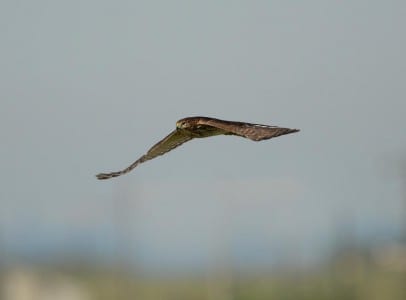
This bird is just flat brown. (It’s late.) Most hawks have yellow eyes, although owls have quite the diversity of colors. Broadies prey on a fair number of herps (amphibians and reptiles) and this one seems to be eyeballing something on or near the ground. Still, they don’t eat a lot when migrating seriously, although one group of broadies took my yard rats to task years ago.
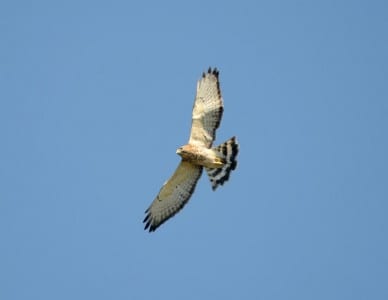
The reddish barring and black-banded tail IDs this as an adult BW, along with the light wings with dark borders. Their reddish barring is somewhat like red-shouldered, as well as our two smaller accipiter’s. Again, notice the rough tail feathers, worn and tattered. I wonder which eastern state this bird hails from!
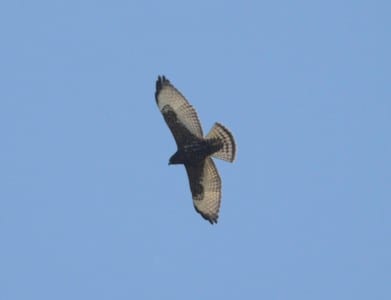
Here is the target of my trip, a dark morph broadie. They are found in Alberta and other portions of SW Canada, and these are my first ever (and I have driven there several times to see one!). Most buteos (except Red-shouldered and Gray) have dark morphs, with most being far more common out West (or only there).
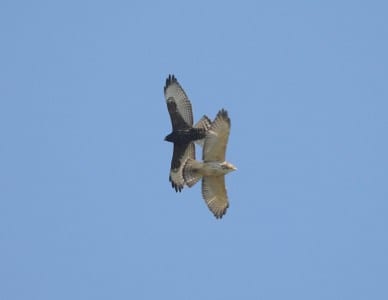
Here is our hero with a normal broadie, immature. See how the size and shape are the same and the similar tail indicates to me they are of the same age. Note the long, broad wings of a buteo, and the wide, fan tail. This genus is a diverse group of muscular, soaring hawks that are mostly tame (exception- dark and light morph red-tails!). Gosh!
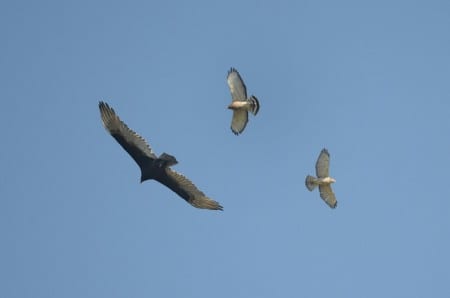
Once again, here is a “pair” of broadies, an adult on top and a young bird lower right. You can see the size difference between buteos and vultures, and the bold markings on most adult hawks as opposed to their young. Looking at how broad their wings and tail are, do you see how they can be lifted on thermals?Just say “yes.”
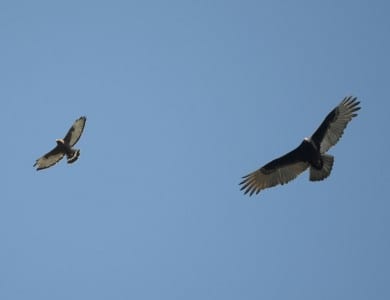
Here’s another dark morph with a real booboo on its right wing. You can also see the vulture has its tail spread more than usual and the wings are flatter to pick up thermals more efficiently. A great research project would be to see if TVs tilt their wings up more when it’s windy. How cool is that?
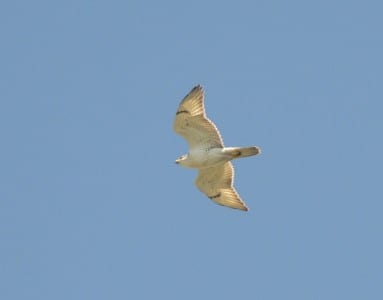
This lovely surprise was an immature Ferruginous Hawk. If you thought it was a white Gyrfalcon, you’d be forgiven.

 Posted in
Posted in 























